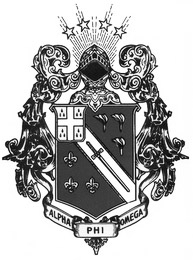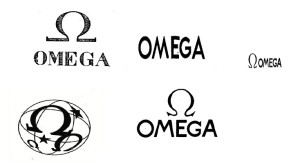The Board denied Applicant Alpha Phi Omega’s motion for summary judgment aimed at Opposer Omega SA’s likelihood of confusion and dilution-by-blurring claims, finding that genuine issues of material fact existed regarding the similarity of applicant’s mark AΦΩ and various registered OMEGA marks of opposer, and regarding the date when applicant’s first used the AΦΩ mark. However, The Board entered summary judgment regarding applicant’s mark shown below (the Crest Mark) on the ground that the involved marks are too dissimilar to support opposer’s Section 2(d) claims. Omega SA (Omega AG) (Omega Ltd.) v. Alpha Phi Omega, Oppositions No. 91197504 and 91197505 (March 31, 2016) [precedential].

Applicant sought to register its marks for jewelry and clothing. Opposer asserted rights in its OMEGA marks, shown below, for watches, clothing, and retail store services featuring watches and jewelry.

Likelihood of Confusion: The Board quickly disposed of the motion for summary judgment vis-a-vis the likelihood of confusion claims. It found the dissimilarities between applicant’s Crest Mark and opposer’s pleaded marks to be dispositive. As to applicant’s AΦΩ mark, however, the Board denied the motion because genuine issues of material fact existed regarding the similarity of the involved marks and the relatedness of the goods and services.
Dilution: A party asserting a dilution claim must allege that its mark became famous prior to the date of first use of the challenged. mark. The Board confirmed that, when challenging a use-based application, the dilution claimant must prove fame prior to the defendant’s first use of its mark. If the applicant fails to establish when it first used its mark in commerce, then opposer need only prove fame prior to applicant’s constructive use date – i.e., its filing date.
The next issue was more difficult:
Whether a plaintiff, in order to prove a dilution claim under the Trademark Act in a Board proceeding where defendant’s application/registration is based on use in commerce, must establish that its mark became famous prior to the defendant’s use of its subject mark in commerce as to any goods or services or whether plaintiff must establish that its mark became famous prior to defendant’s use of its subject mark in commerce in connection with the goods and/or services specifically identified in defendant’s subject application or registration.
The Board took the broader view, ruling that a dilution-by-blurring claimant must prove that its mark became famous “prior to any established, continuous use of the defendant’s involved mark as a trademark or trade name, and not merely prior to use in association with the specific identified goods or services set forth in a defendant’s subject application or registration.” The Board noted that other courts have agreed with this approach, including the CAFC in Enterprise Rent-A-Car Co. v. Advantage Rent-A-Car, Inc., 330 F.3d 1333, 66 USPQ2d 1811 (Fed. Cir. 2003).
Turning to the merits of opposer’s dilution claims, the Board focused on the first four factors of Section 43(c)(1) of the Lanham Act.
As to applicant’s Crest Mark, the Board found no genuine dispute as to the lack of similarity between the involved marks, applicant’s intent, and the associated between applicant’s mark and the allegedly famous marks. The word OMEGA is found only within the banner at the bottom of the Crest Mark, and there was no evidence that a substantial percentage of consumers would focus on the “Omega” element alone and thereby associate the mark with opposer. There was no evidence that applicant intended to create such an association, and there was no evidence of the existence of an actual association. The Board therefore concluded that applicant’s Crest Mark “will not impair any assumed distinctiveness of opposer’s assumedly famous OMEGA marks.” The Board therefore granted the motion for summary judgment as to this claim.
With regard to applicant’s AΦΩ mark, the Board found that genuine disputes of material fact exist as to (1) whether the involved marks are sufficiently similar that applicant’s mark “conjures up an association” with opposer’s mark, and as to (2) when applicant first used the AΦΩ mark in interstate commerce, whether as a trade name for a fraternal organization or as a trademark for any goods.
Therefore, the Board denied opposer’s summary judgment motion regarding this dilution-by-blurring claim.

